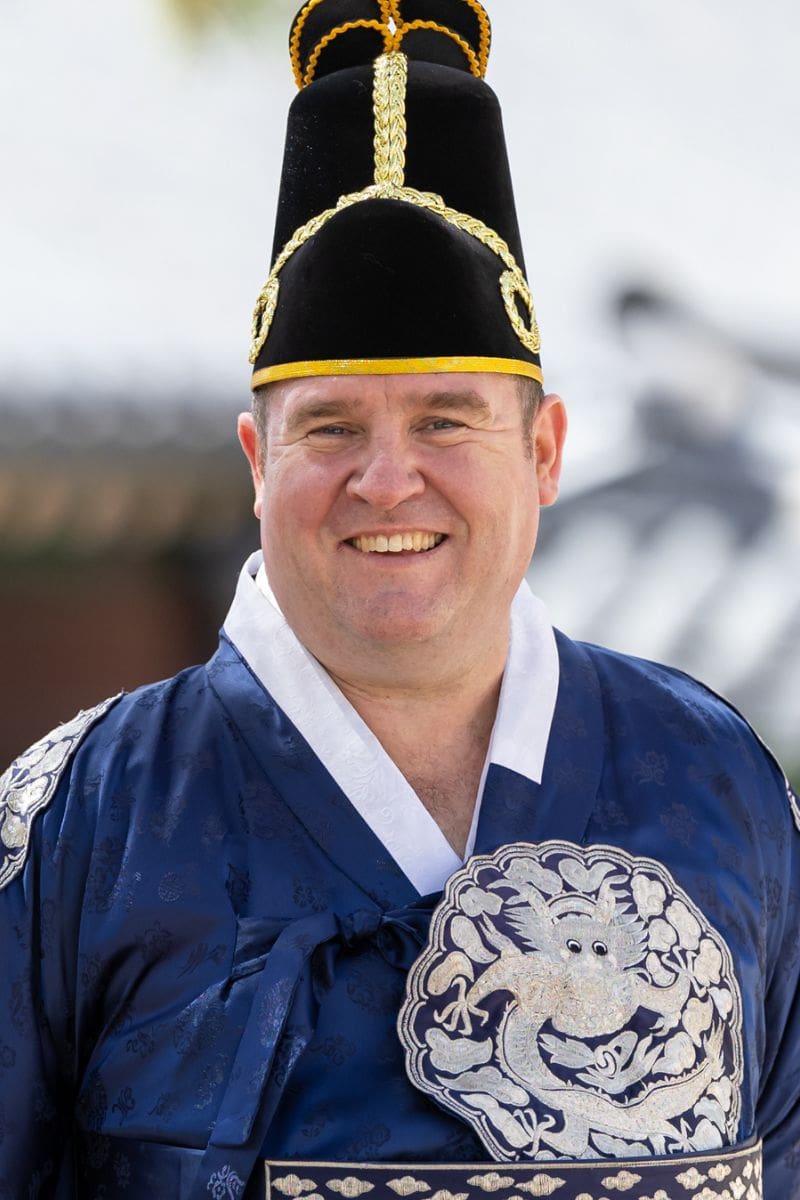The sound of taiko drums has been described as the heartbeat of Japan. Particularly when played in a group the sound is powerful and very primal. In the hands of skilled practitioners, taiko drumming is also visually spectacular. A high-level performance is equal parts dance, music and martial arts. Great taiko performances sound fantastic and are visually impressive. By participating in a taiko workshop you can get a taste of this unique cultural experience. Taiko drumming lessons will give you a great full-body workout, you will have a whole lot of fun, and you will also make a monumental amount of noise. Taiko drumming was definitely one of the highlights of our ten days in Tokyo. If you are looking for a slightly alternative experience in Tokyo that is also great for kids, we would highly recommend giving Taiko drumming classes a go.
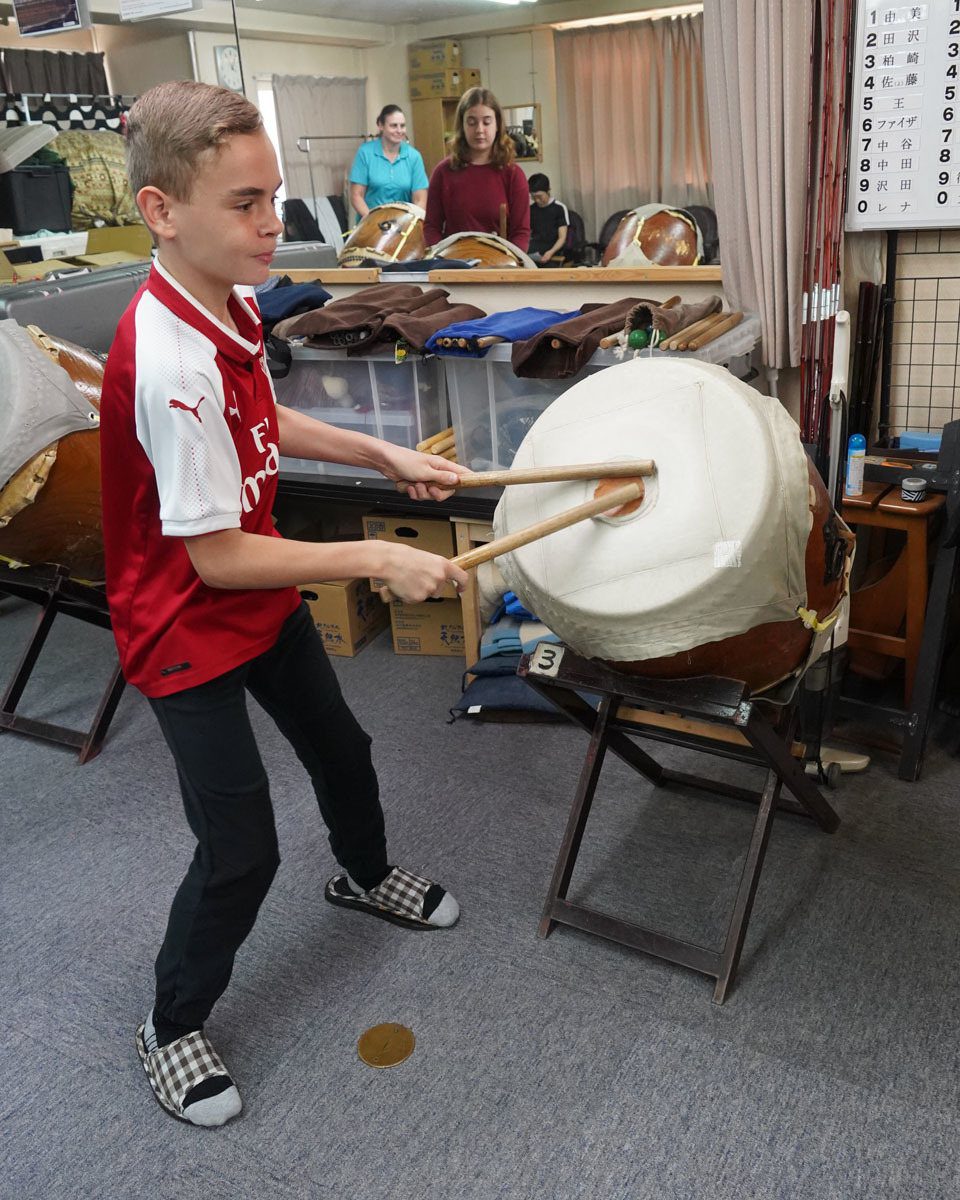
NOTE: Our taiko drumming experience was part-sponsored by Voyagin but our opinions are entirely our own.
Join the Japan Travel Planning Facebook Group

Disclaimer: This article contains affiliate links. If you book after clicking on one of these links then we may receive a small commission at no extra cost to you.
How to book a taiko drumming class for tourists
We booked our taiko drumming class through Voyagin, a large and reputable online travel agency owned by Rakuten, the biggest e-commerce company in Japan. Voyagin offers a huge range of travel experiences in Japan. The booking process is quick and simple and if you are having any difficulties an online chat service is available.
Click here to book into a Taiko drumming workshop through Voyagin
What is taiko
Taiko is a Japanese drum instrument. There are many kinds of taiko drums with the smallest about 30 cm (1 foot) in diameter ranging up to about 120 cm (4 feet) in diameter. Historically the bodies of the drums were made from hollowed-out logs with the drum head made from cowhide.
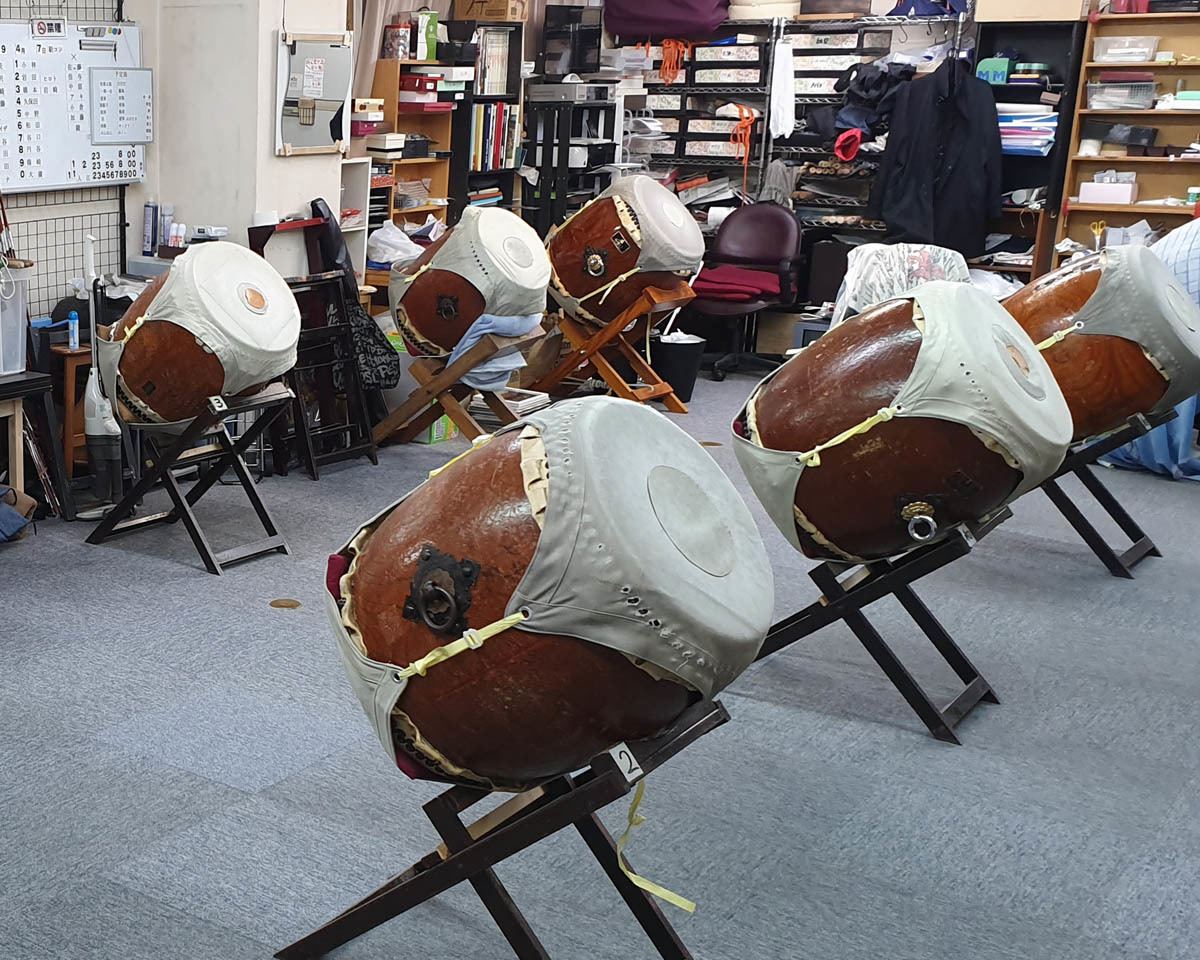
History of taiko drumming
Taiko drums have a 1400 year history in Japan with archaeological evidence of their use dating back to the 6th Century AD. Their use was and still is pervasive through many aspects of Japanese society and culture. Taiko drums were used for communication purposes. In war, they were used to motivate soldiers and set marching tempos. Taiko drums have long been used in both Buddhist and Shinto religious ceremonies and festivals. They have also had an important role to play in Japanese theatrical performances such as Kabuki and Noh theatre to provide rhythmic accompaniment.
The modern history of taiko dates back to 1951 when a person by the name of Daihachi Oguchi created the Kumi-Daiko style. Kumi-Daiko means a taiko ensemble. Estimates of the number of taiko ensembles vary wildly from as low as 1 000 groups to as high as 8 000 ensembles. What can’t be disputed is that is massively popular. Modern taiko drumming has also spread throughout the world with many ensembles in countries such as the United States, Canada, Europe, South America and Australia.
Why you should try taiko drumming
Modern taiko drumming is like a blend of music, dance and martial arts. The drums are played while standing and you start with your legs planted like a wide karate stance, your body side on to the drums and your bachi (drum sticks) held high. It looks impressive and feels fierce like you’re about to do a martial arts workout. The wide stance helps with stability and power.
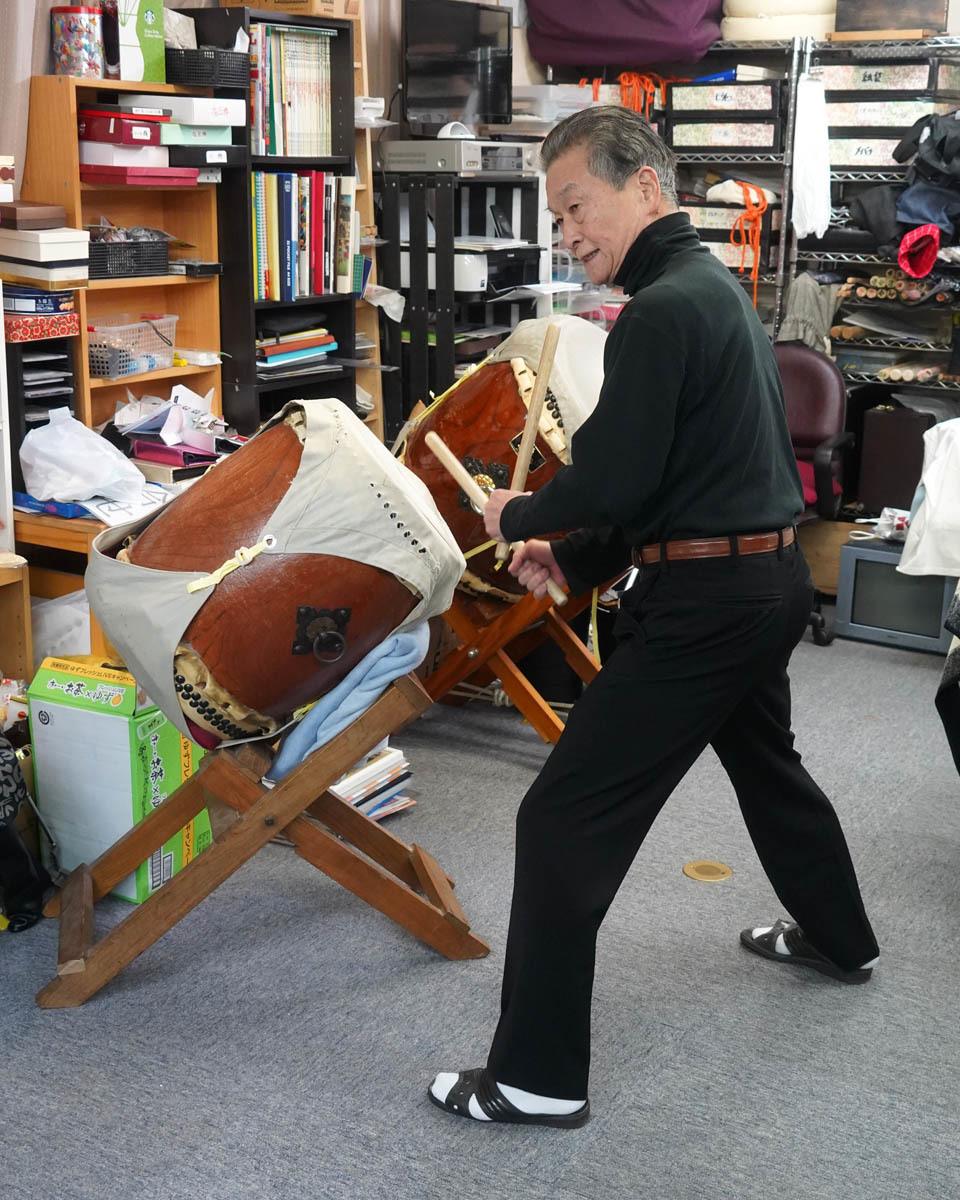
There are heaps of benefits, many of which you will notice straight away even if you have never played the taiko. Here are just some of the benefits:
- A whole-body workout – When playing the taiko drums, you won’t just be using your arms. It’s a highly physical activity and you will also have to use your legs, glutes, back, core and shoulder muscles. It’s also an excellent cardio workout as you will be making many rhythmic body movements both fast and slow which are very tiring. If you regularly play the taiko drums you will also build flexibility, endurance and strength over time.
- A great stress release – At a primal level, there is a lot of satisfaction involved with hitting something. In modern society, there are few activities where it’s socially acceptable to hit stuff but in taiko drumming, it’s a prerequisite. While there are also plenty of soft and subtle movements in taiko drumming, sometimes you just have to thump the drum really hard. At a deeper level, taiko drumming requires you to live in the moment. Mindfulness is a concept we teach children in the school that I work at. Taiko drumming encourages mindfulness through rhythmic body movements, closely counting and following the patterns, and keeping time with the leader. With the level of focus required you have to stay on the ball and it becomes very easy to tune out the other distractions in your life.
- Social benefits – Modern taiko is normally a group activity. Even from our limited experience, there were plenty of opportunities to chat with other people before and after the drumming session as well as during breaks. Taiko also fosters a strong sense of teamwork as you have to listen to and work in precision with others if you want a performance to sound good.
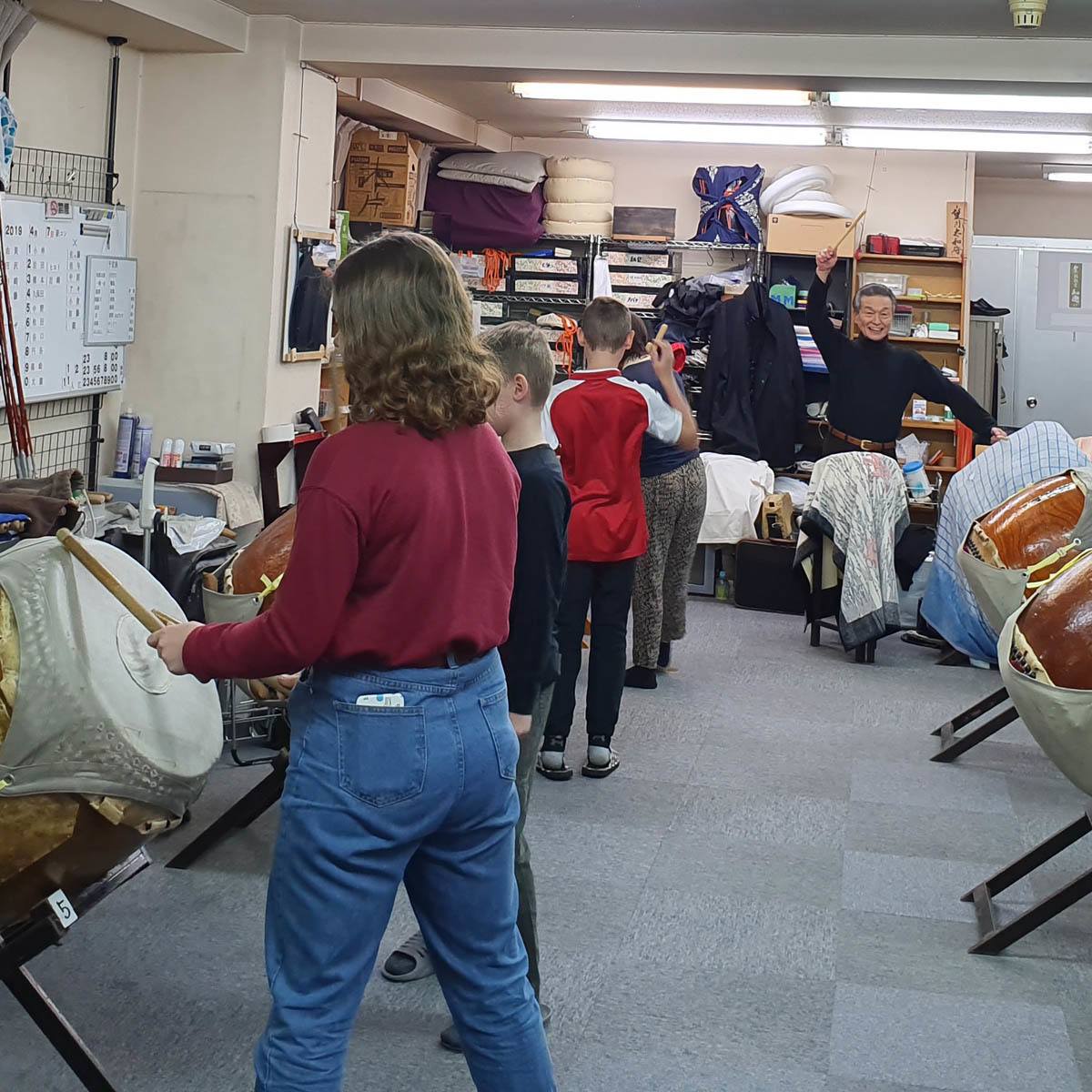
How to get to the taiko drumming class
Our taiko drumming class was held in a fairly non-descript building about a five-minute walk from Ryogoku station.
It can be a little difficult to find even with wifi so look out for the Taiko school sign on the side of the building.
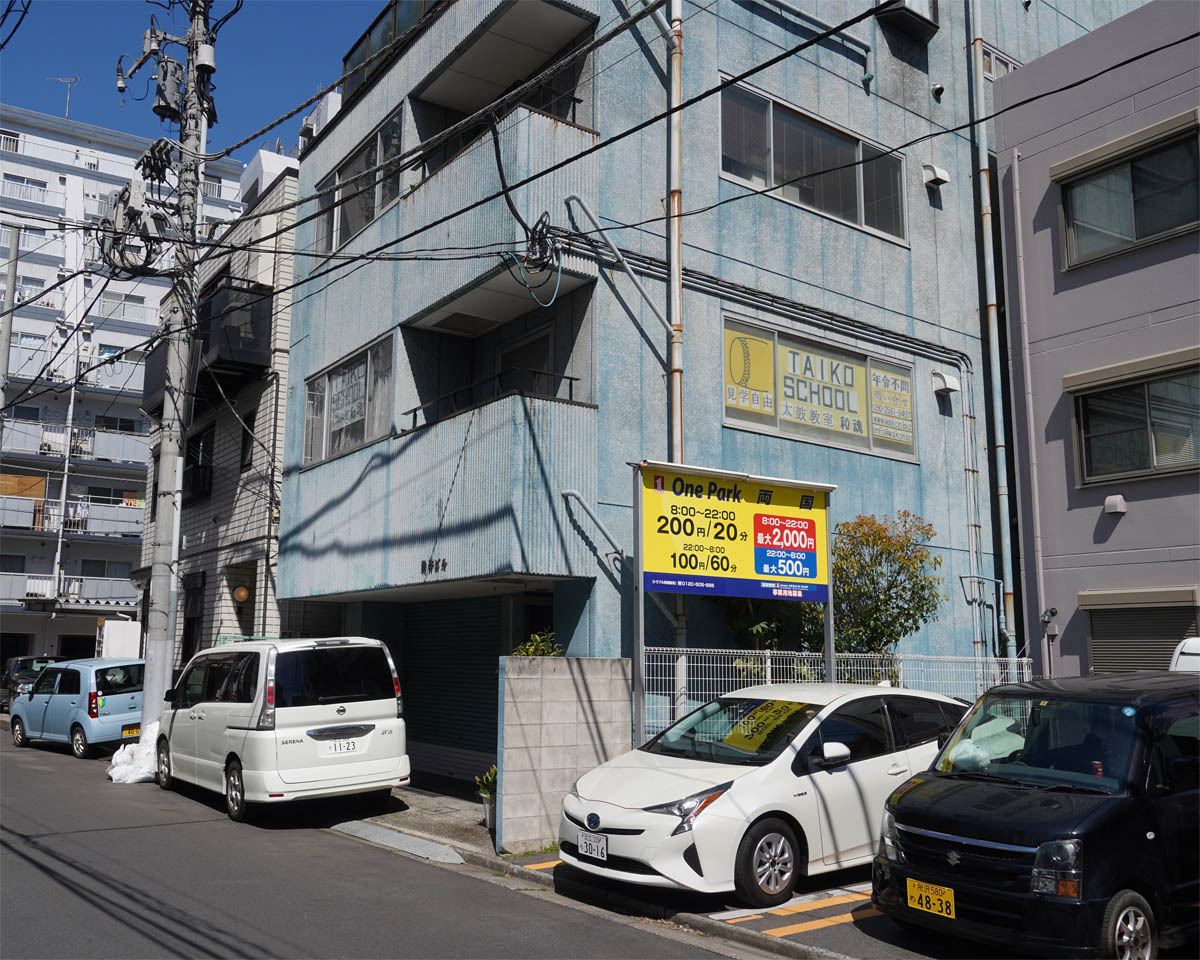
The Wakon Wadaiko school is located on the second floor of the building. When we arrived, we changed out of our shoes and into some indoor slippers while waiting for the lesson to start. There is a toilet in the studio and drinks are also available if you forget to bring your own refreshments.
What to expect from taiko drumming classes
Our lesson consisted of our family of five people along with another family of four plus three experienced taiko students. Our lesson was led by Yukihiro Miyauchi who has over 40 years of taiko experience and founded his school in 1986 so he is a true taiko master. We were allowed to take photos and video of the experience.
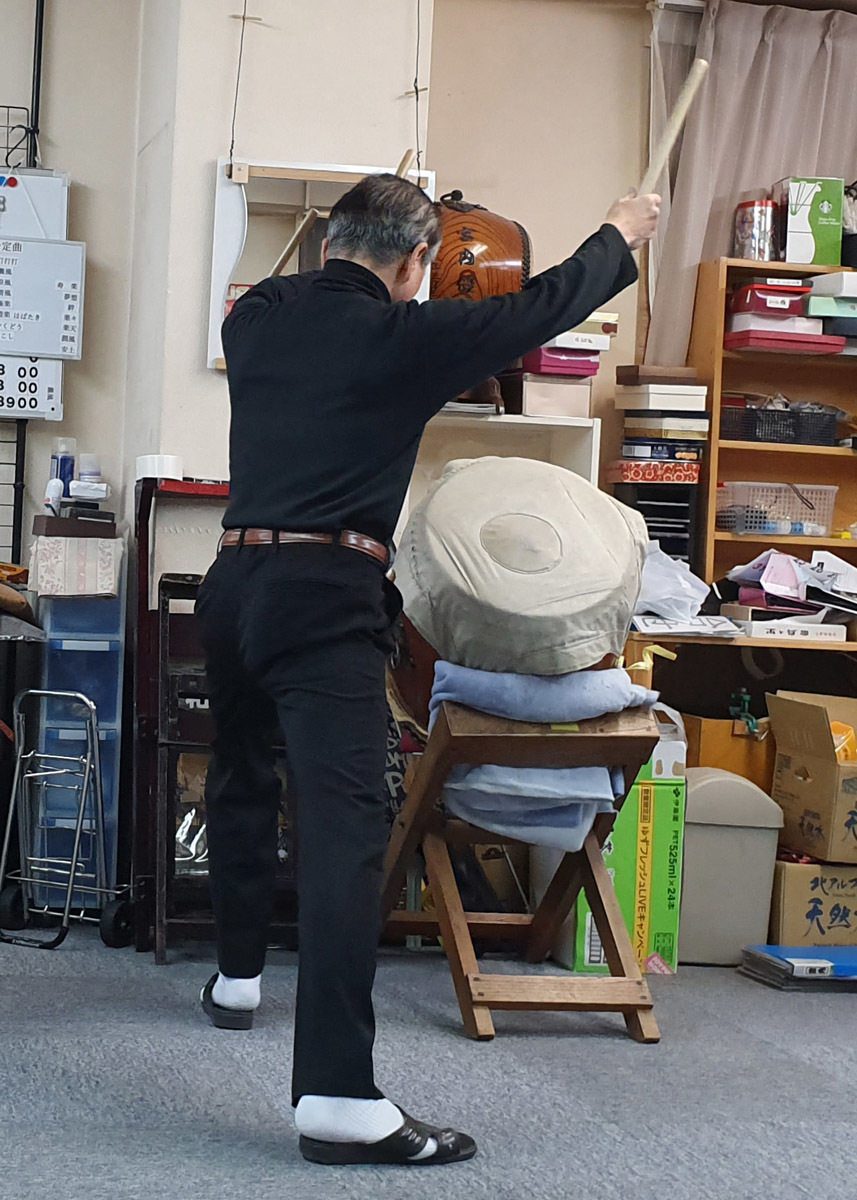
Master Miyauchi turned out to be a friendly and passionate instructor with a wealth of knowledge and experience. He also had excellent English skills. He first split our class into two groups. Group A consisted of his three experienced students who knew what they were doing and Group B consisted of beginners like ourselves. The experienced students were all friendly and helpful to newbies like ourselves.
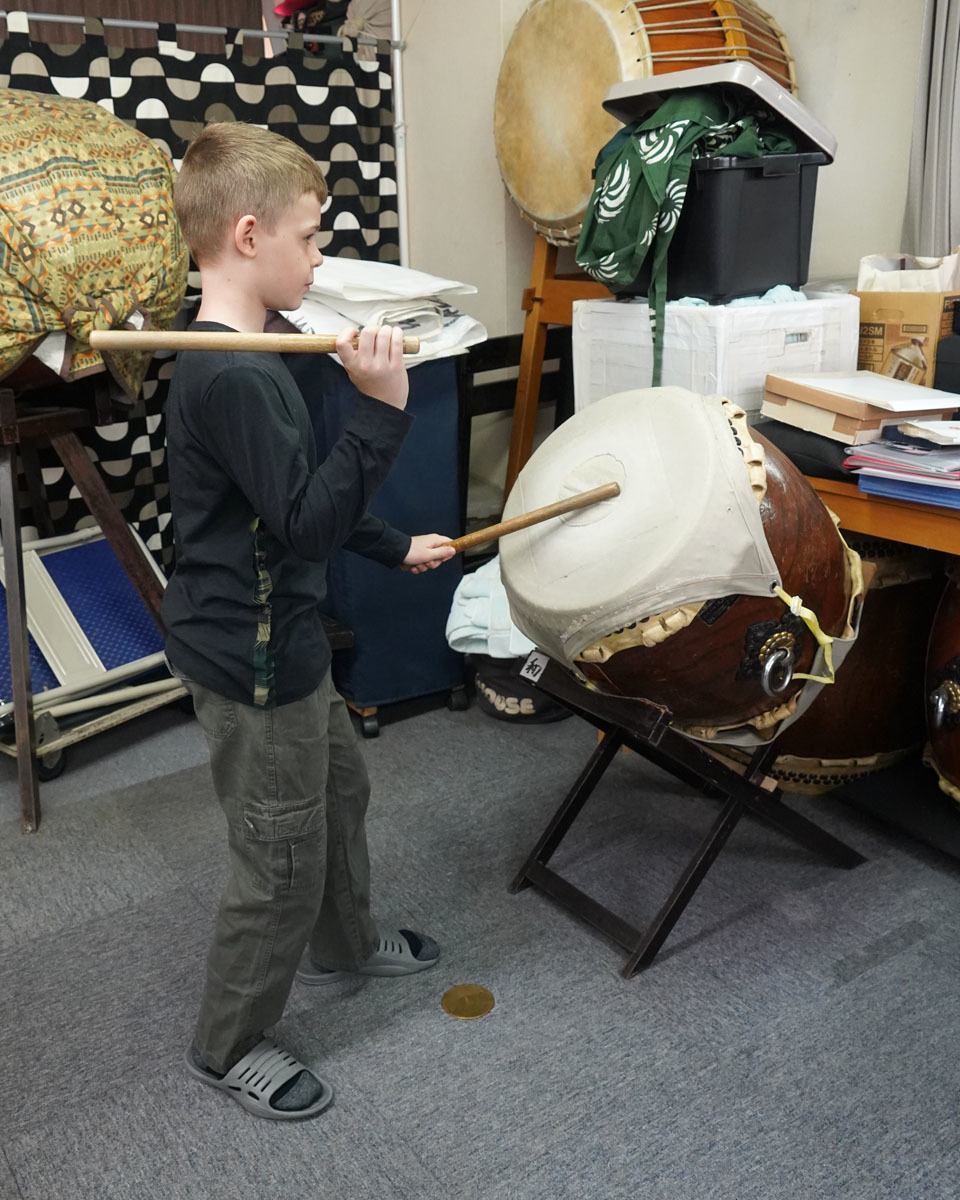
Each group rotated every 10 minutes or so. We were initially taken aback by being split into two groups as we would only have about half of the allotted time learning and playing the taiko drums. However, our opinions changed completely by the end. Being split into two groups was an absolute blessing in disguise. Firstly, we had the opportunity to watch experienced drummers in action which was a lot of fun. At this higher level, you could definitely see the elements of dance in their performance as well as the musicality. Secondly, we discovered that taiko drumming could be exhausting so we got to have some much-needed breaks while Group A was performing. In hindsight, I don’t think we could have played for the whole session without having the rest breaks. The breaks also gave us time to look through his extensive albums of taiko performances and photos.
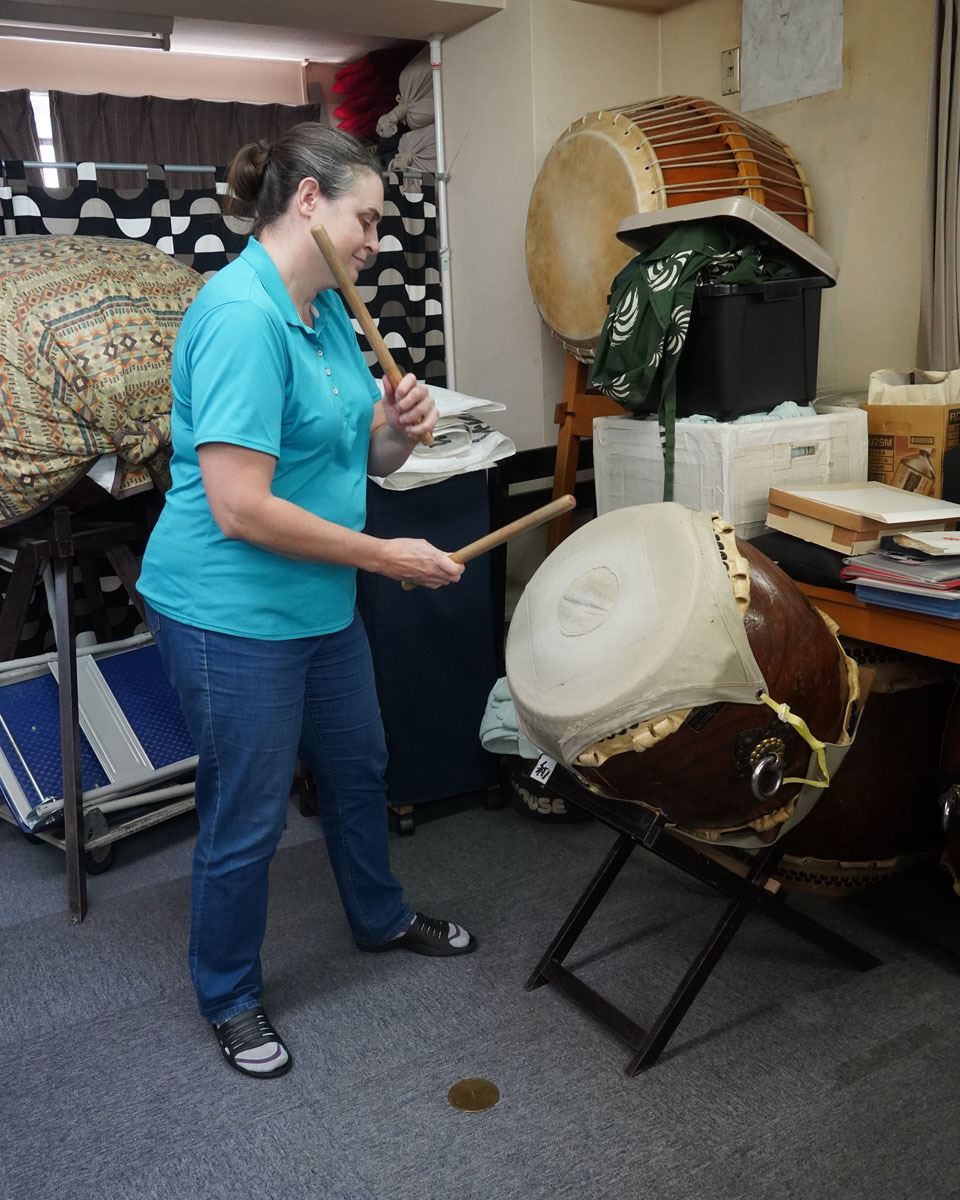
At the start of the lesson, we learned some basics such as the proper stance and the two different sounds made by hitting the centre or edge of the drums. We also learnt front hitting with the right hand and back hitting with the left hand, as well as how to make loud sounds with big strikes of the drum and small sounds by tapping the drum. Even at our beginner level, we were very aware of the theatrical element of taiko drumming with our bachi (drumsticks) raised high overhead and the big whole arm movements which are so unlike the wristy movements I associate with normal drumming.
After mastering these basics, we then started to learn some basic beat patterns. I really enjoyed the range of sounds and patterns we could create with just one instrument. I particularly loved the rumbling thunder of the taiko drums when we let rip with a series of big arm movements on the centre of the drum. Extremely satisfying!! I would love to one day have an opportunity to play one of the huge odaiko drums such as those shown in the video below. They are so deep, thunderous and warlike and I’m sure the sounds would reverberate right through my core.
Over time, we put the beat patterns we had learnt together to learn a number of different songs including some composed by Master Miyauchi. It was impressive what we were all able to achieve in a small amount of time thanks to our instructor. Some of the songs performed by our little ensemble sounded synchronised and actually pretty good.
Throughout the lesson, Master Miyauchi performed a number of demonstrations on the taiko drums as well as a Japanese flute he used during a performance by his experienced students. As you would expect with 40+ years of experience, he had pretty mad skills.
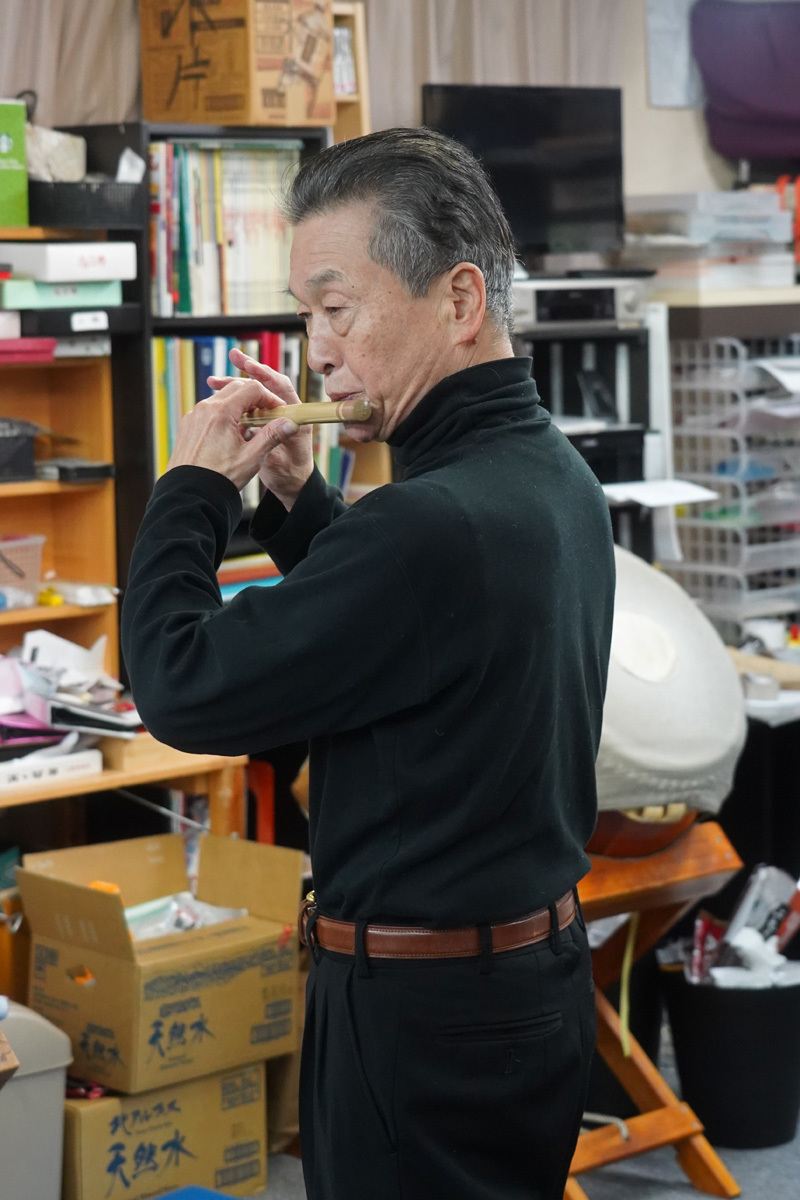
Master Miyauchi is a born teacher. The lesson was very fast-paced and reflecting back over the lesson we progressed a long way in a short amount of time. However, the lesson never felt-rushed and the skill progression felt logical and natural. He was funny, patient and encouraging with all of us, even during the times we felt a bit out of our depth.
At the end of the experience, our instructor drew on his acting skills and put on a special lion dance performance which was full of energy and enthusiasm.
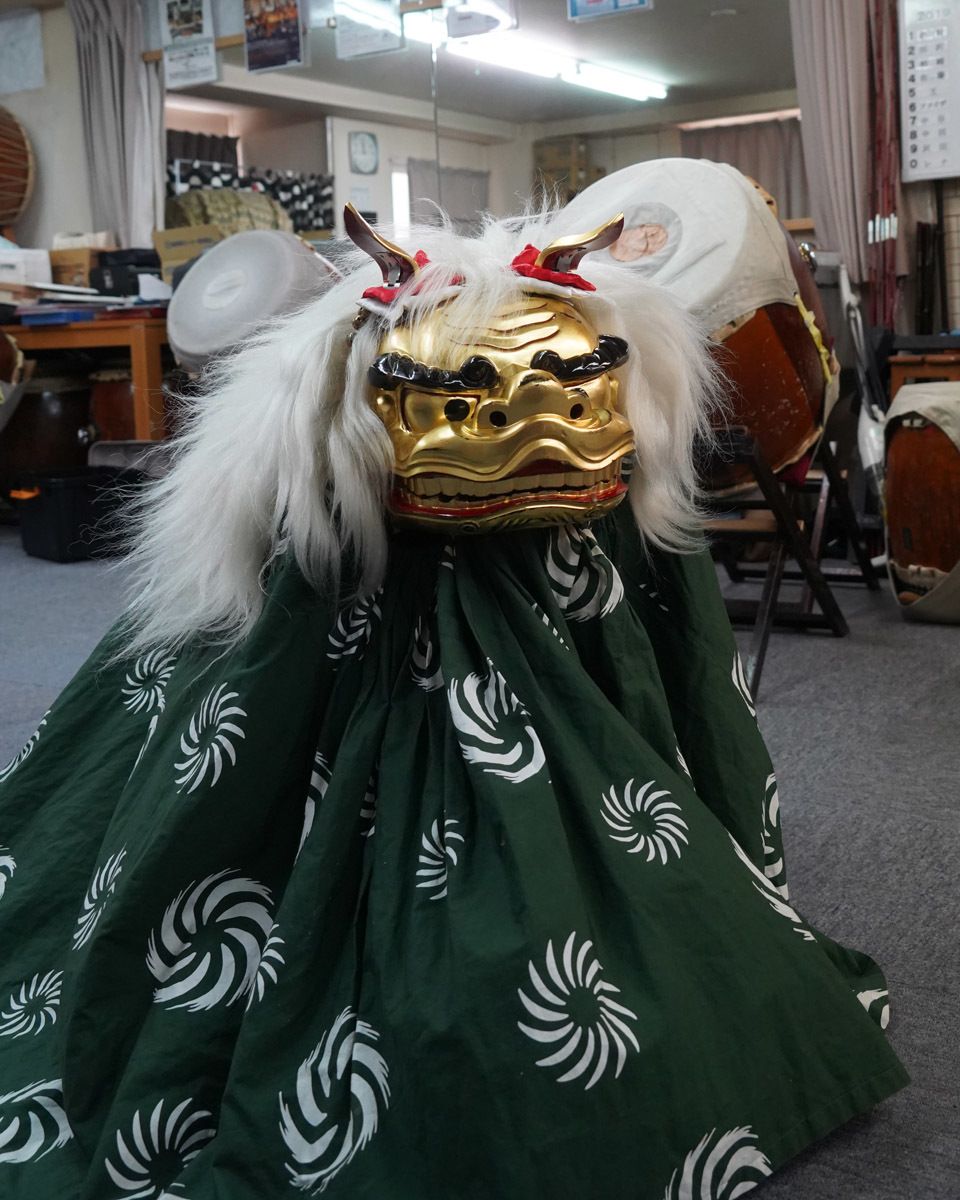
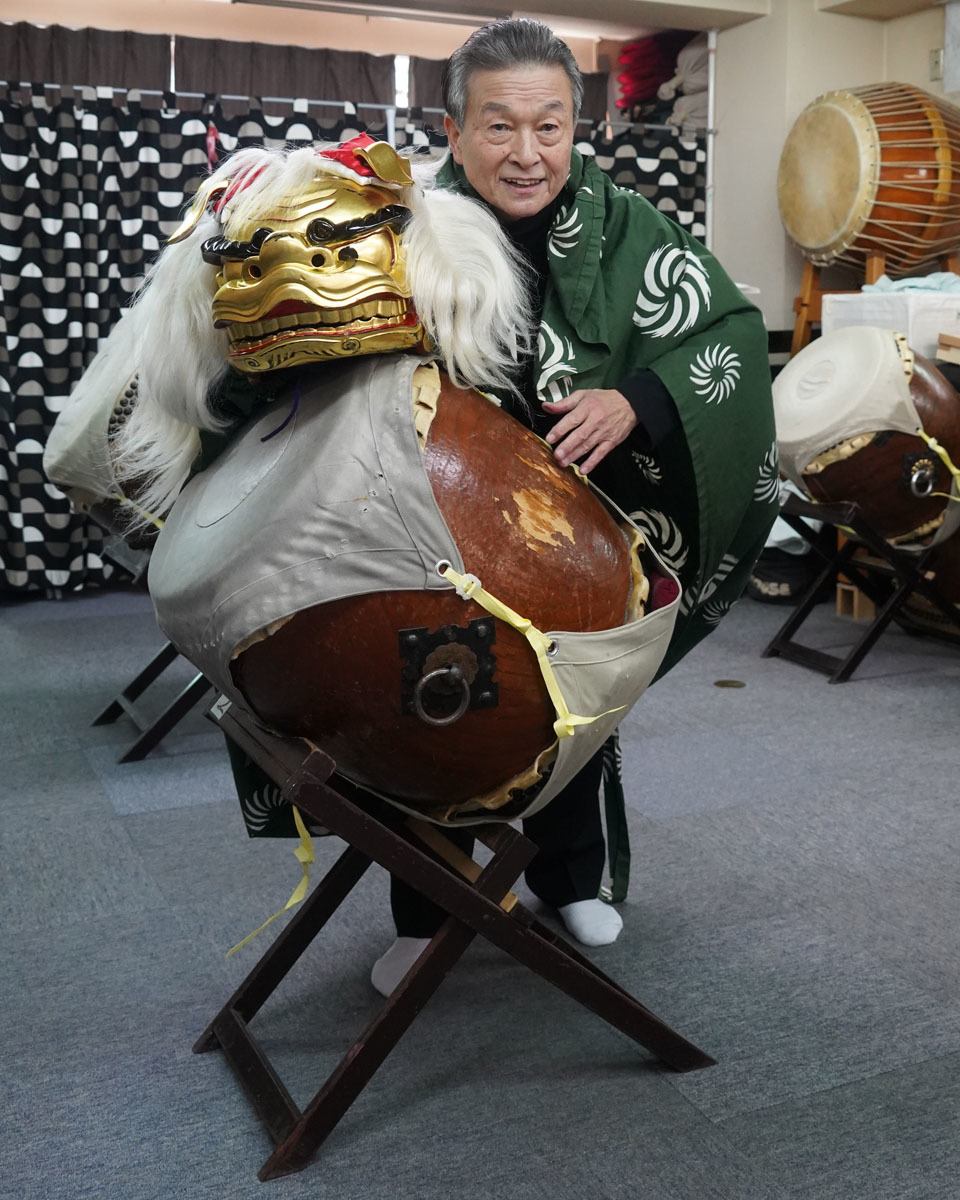
We all definitely finished the lesson a little exhausted but on an emotional high. I left with the conviction that I wanted to learn more about taiko drumming on our return to Australia.
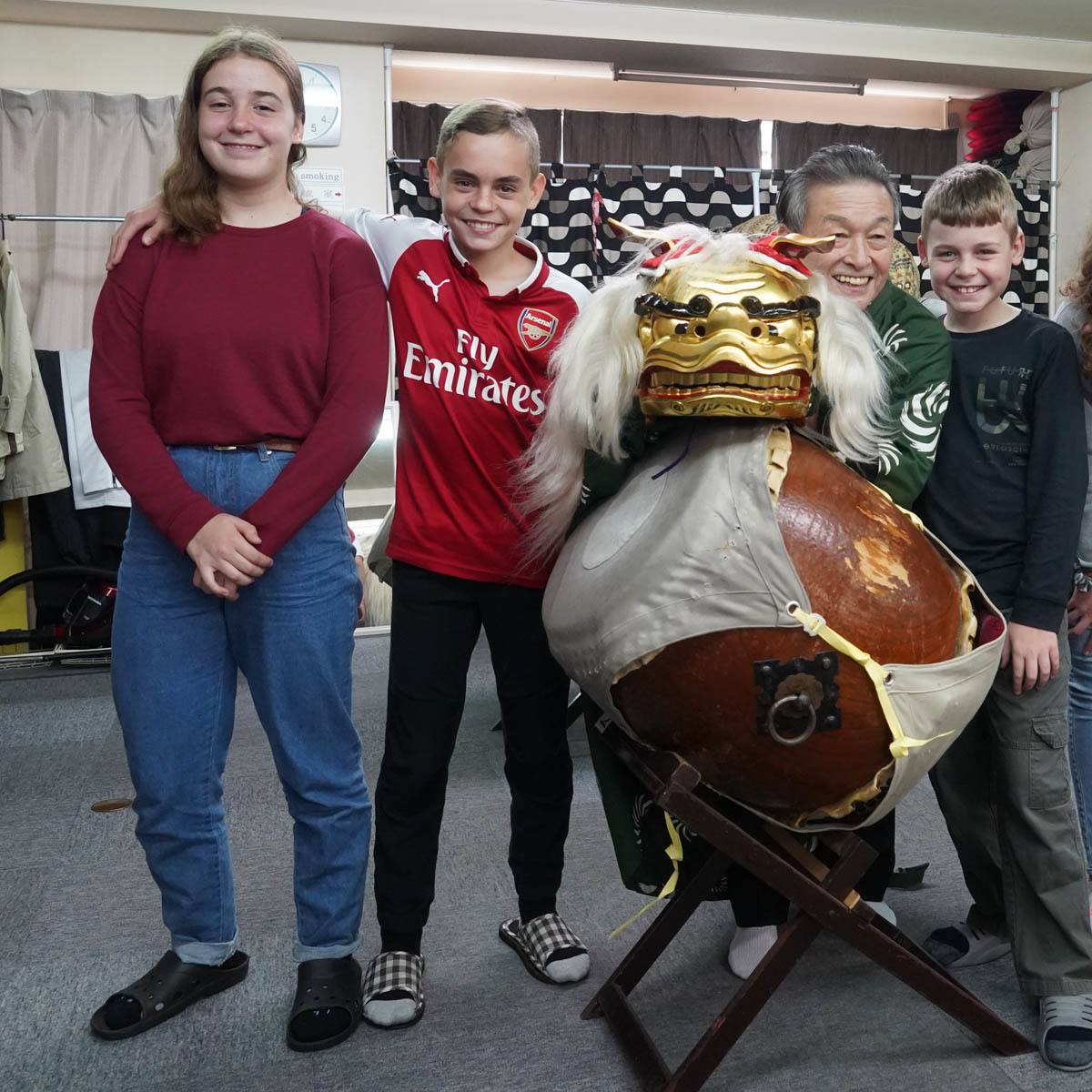
How to book a taiko drumming class for tourists
If you have ever had an urge to try drumming or want to experience something a little different from the normal tourist activities and experiences in Tokyo, make sure you try a taiko drumming lesson. You’ll get a different insight into Japanese culture, get a great workout and have a lot of fun along the way.
Click here to check out and book into a Taiko drumming workshop through Voyagin
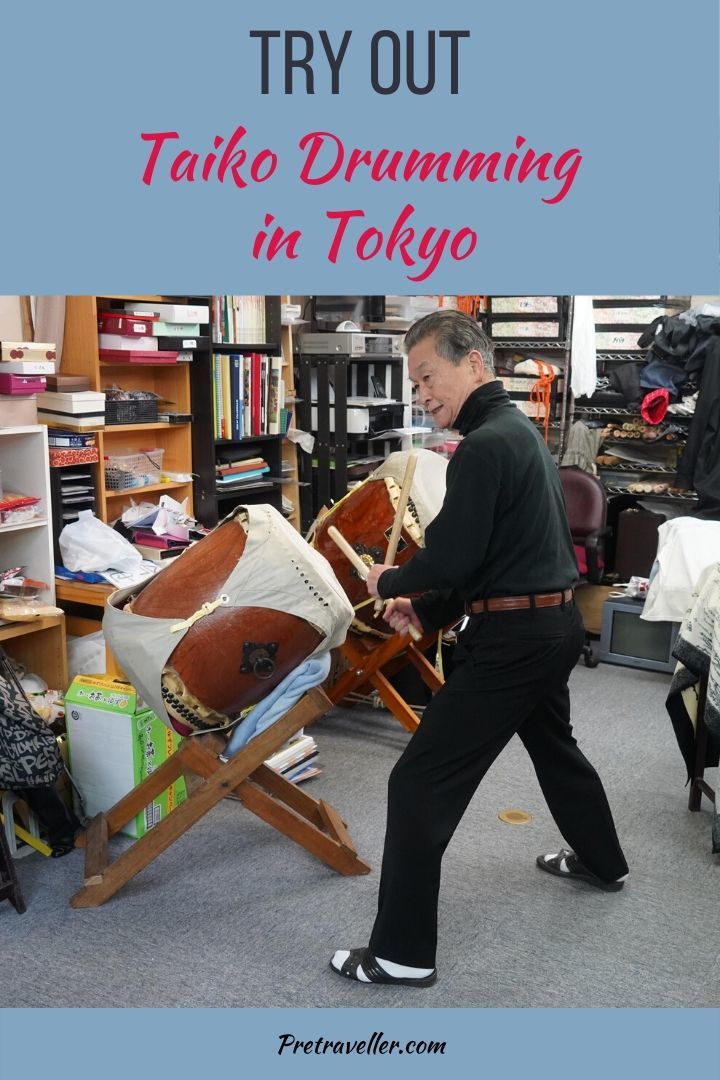
You may also like:
- FAQ: Where to Purchase Robot Restaurant Discount Tickets
- Reader Mailbag: Where To Book Mario Kart In Tokyo And Japan
- Easiest Options To Get From Narita Airport To Shinjuku, Shibuya And Shinagawa
- Easiest Options To Get From Narita To Northern Tokyo, Including Ueno, Asakusa And Akihabara
Join the Japan Travel Planning Facebook Group

Disclaimer: This article contains affiliate links. If you book after clicking on one of these links then we may receive a small commission at no extra cost to you.
Tony Sutherland-Smith is the co-founder and key contributor to Pretraveller.com, where his extensive knowledge and passion for travel shine brightly. With a special focus on Japan and South Korea, Tony brings a wealth of practical information and insights to the table, especially regarding staying connected while abroad. His expertise in navigating the complexities of SIM cards, pocket WiFi, and eSIMs has made him an invaluable resource for travellers seeking seamless digital connectivity on their journeys.
Tony’s approach to travel writing is deeply rooted in offering reliable, detailed, and up-to-date information, making him a trusted figure in the travel community. Whether discussing Tokyo’s neon-lit streets, Seoul’s cultural richness, or the technicalities of staying connected in these fast-paced destinations, his articles reflect a combination of thorough research and personal experience.
At Pretraveller.com, Tony’s contributions go beyond just sharing travel tips; they are about enriching the travel experience of his readers. His guidance is tailored to empower travellers, helping them navigate foreign lands confidently and stay connected with the world, no matter where their adventures take them. Join Tony on Pretraveller.com as he continues to explore the nuances of travel in Japan and South Korea and offers valuable insights for the modern, connected traveller.


